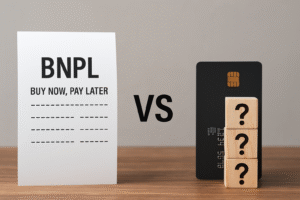Complete Guide to Understanding Insurance Policies in the U.S.
Discover the essentials of U.S. insurance policies. Learn types, coverage, and tips to choose the right plan for your needs and protect.
Understand details about insurance policies in the USA

Insurance is one of the most important financial tools for individuals and families in the United States. Whether it is health, auto, home, or life coverage, an insurance policy can provide protection and peace of mind during unexpected events.
However, policies are often filled with technical terms and conditions that can make them difficult to understand. This guide will walk you through the essentials, helping you make informed decisions about your coverage.
What Is an Insurance Policy?
An insurance policy is a contract between you and the insurer. In exchange for your premium payments, the insurer promises to cover certain risks, such as medical expenses, car accidents, property damage, or loss of income.
The terms of coverage, including what is included and excluded, are detailed in the policy document.
Understanding your policy means knowing four core elements:
- Premium – the amount you pay, usually monthly or annually;
- Deductible – the out-of-pocket cost you must cover before the insurer begins to pay;
- Coverage limit – the maximum amount the insurer will pay for a claim;
- Exclusions – events or situations not covered by the policy.
Types of Insurance in the U.S.
The U.S. insurance market is diverse, with different types of policies designed to meet specific needs. Health Insurance, often provided through employers or government programs like Medicare and Medicaid. It covers doctor visits, hospital stays, prescriptions, and preventive care.
Auto Insurance, required in almost every state, it protects drivers against financial loss due to accidents, theft, or damage.
Covers damage to your home and personal property caused by fire, theft, or natural disasters, along with liability protection.
Similar to homeowners insurance, but designed for tenants. It covers personal belongings and liability. Life Insurance. Provides financial support to beneficiaries after the policyholder’s death. Options include term life and whole life insurance.
Disability Insurance, peplaces part of your income if you are unable to work due to illness or injury.
Why Insurance Matters
The primary role of insurance is risk management. Instead of carrying the full burden of financial loss, you transfer some of that risk to the insurance company.
For example, a car accident resulting in $20,000 in damages could be financially devastating without auto insurance. With a policy, your insurer absorbs most of the cost, leaving you responsible only for your deductible.
Insurance also ensures access to essential services. Health insurance, for instance, makes it possible to afford preventive care and major medical treatments without exhausting savings.
Similarly, life insurance provides security for loved ones, ensuring they are financially supported in difficult times.
How to Choose the Right Policy
Selecting the right insurance policy requires careful evaluation of your needs and financial situation. Here are some steps to guide the process:
- Assess your risks: do you own a home? Do you drive frequently? Do you have dependents relying on your income?;
- Compare providers: different insurers may offer varying premiums and coverage terms for similar policies;
- Review coverage details: pay attention not only to what is included but also to exclusions and limitations;
- Consider your budget: balancing premium costs with deductibles is key. Lower premiums may mean higher out-of-pocket expenses;
- Seek professional advice: Independent insurance agents or financial advisors can provide personalized recommendations.
By considering all these points, you’ll be able to make the right choice and avoid any concerns during the process!
Conclusion
Understanding insurance policies in the U.S. requires attention to detail and an awareness of your personal needs.
By learning the basics, premiums, deductibles, limits, and exclusions—you gain the confidence to choose wisely. Insurance is more than a financial product; it is a safeguard for your health, your property, and your family’s future.
Taking the time to evaluate options, avoid common mistakes, and manage your coverage actively ensures that you are protected when life’s unexpected events occur.
In the end, the right insurance policy provides not just financial security, but also peace of mind.






